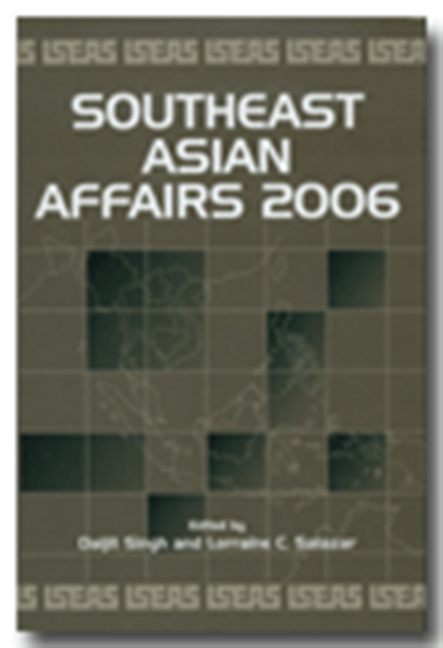Book contents
The Abu Sayyaf Group: From Mere Banditry to Genuine Terrorism
from The Philippines
Published online by Cambridge University Press: 21 October 2015
Summary
Since the Philippine government joined the global war on terrorism, it has been in hot pursuit of the Abu Sayyaf Group (ASG). Though government and media sources continue to describe the ASG as a mere bandit group because of the many kidnap-for-ransom activities (KRAs) it perpetrated in the past, the series of bombings that the ASG carried out in 2004 and 2005 were hallmarks of terrorism rather than banditry. Is the ASG mutating from a mere bandit group to a genuine terrorist organization?
Much has already been written about the ASG. But there is still little understanding of its exact origin, ideological inclination, organizational structure, leadership dynamics, operational capabilities, and recruitment strategies. This article aims to add value to the ongoing discussions on the ASG by focusing on such issues. It also aims to update the reader on the terrorist attacks conducted by the ASG in 2005 and to describe the Philippine government's counter-terrorism response.
The Genesis Of The Asg
Though it is widely known that Ustadz Abdurajak Janjalani founded the ASG, there is no uniform account of its exact origin. According to media reports, the military allegedly formed the ASG in early 1990s to penetrate the ranks of Muslim radicals in Southern Philippines. The ASG reportedly acted as an agent provocateur of the Armed Forces of the Philippines (AFP). Edwin Angles (aka Ibrahim Yakub), who is believed to be Janjalani's co-founder of the ASG, was said to be the deep cover agent for the Defense Intelligence Group (DIG). Some sources even said that the National Intelligence Coordinating Agency (NICA) facilitated the establishment of the ASG with the prodding of the Central Intelligence Agency (CIA). A Moro National Liberation Front (MNLF) leader in Basilan even confessed that the ASG enjoyed the support of the military assigned to the area. The International Peace Mission that went to Basilan on 23–27 March 2002 found that there were “consistent credible reports that the military and the provincial government are coddling the Abu Sayyaf”.
- Type
- Chapter
- Information
- Southeast Asian Affairs 2006 , pp. 247 - 262Publisher: ISEAS–Yusof Ishak InstitutePrint publication year: 2006



